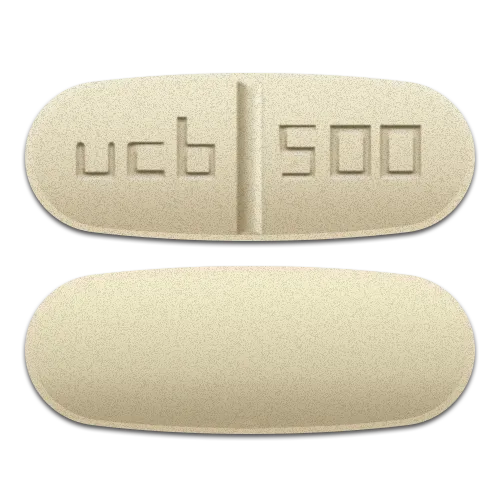Medically reviewed by:
Dr. Elizabeth Chen, MD, FAES
Board-Certified Neurologist & Epileptologist
Director, Comprehensive Epilepsy Program
Last updated: November 18, 2025
What Is Levetiracetam (Keppra) Used For?
Levetiracetam is a second-generation antiepileptic drug with a unique mechanism — selective binding to synaptic vesicle protein 2A (SV2A), modulating neurotransmitter release. FDA-approved indications:
- Adjunctive therapy for focal (partial-onset) seizures in patients ≥1 month
- Adjunctive therapy for myoclonic seizures in juvenile myoclonic epilepsy (JME) ≥12 years
- Adjunctive therapy for primary generalized tonic-clonic seizures (PGTCS) ≥6 years
- Monotherapy for focal seizures in adults and adolescents ≥16 years (conversion from another AED)
EMA also approves it as monotherapy for newly diagnosed focal seizures with or without secondary generalization.
2025 Comparison Table: Levetiracetam vs Other AEDs
| Feature | Levetiracetam | Lamotrigine | Valproate | Carbamazepine | Topiramate | Oxcarbazepine |
|---|---|---|---|---|---|---|
| Approved age | ≥1 month | ≥2 years | All ages | All ages | ≥2 years | ≥2 years |
| Drug interactions | None | Few | Many | Major inducer | Few | Moderate |
| Psychiatric side effects | Irritability (5–15%) | Low | Mood stabilizing | Low | Cognitive slowing | Low |
| Weight effect | Neutral | Neutral/loss | Gain | Neutral/gain | Loss | Neutral |
| Titration required | No | Yes (slow) | No | Yes | Yes | Yes |
| Renal clearance | 66% | Minimal | Hepatic | Hepatic | Hepatic | Hepatic |
Dosing & Administration Schedules
Adults – Focal Seizures (Adjunctive)
| Initial dose | 500 mg twice daily |
| Increment | 1000 mg/day every 2 weeks |
| Usual effective range | 1000–3000 mg/day (divided BID) |
| Maximum | 3000 mg/day |
Children 4–16 years – Weight-Based Dosing
| Initial | 10 mg/kg twice daily |
| Increment | 20 mg/kg/day every 2 weeks |
| Target | 30 mg/kg twice daily (max 3000 mg/day) |
Renal Impairment Adjustment
| CrCl >80 mL/min | No change |
| CrCl 50–80 mL/min | 500–2000 mg/day |
| CrCl 30–50 mL/min | 500–1500 mg/day |
| CrCl <30 mL/min | 500–1000 mg/day |
| ESRD + dialysis | 500–1000 mg/day + 250–500 mg post-dialysis |
Side Effects & Tolerability
- Most common: somnolence, dizziness, fatigue
- Behavioral: irritability, aggression, anxiety (5–15%, higher in children and psychiatric history)
- Usually improve after first 4 weeks or with XR formulation
- No hyponatremia, no rash, no hematologic effects
Pregnancy & Breastfeeding
Category C. Large registry data show no increased teratogenic risk above background. Safe in breastfeeding (low milk transfer).
Official Sources
- FDA Label 2024: Keppra Prescribing Information
- EURAP Registry 2024: PubMed – Levetiracetam in Pregnancy
Verified Patient Reviews (2024–2025)
"Michael B., 42 – 2000 mg/day for focal epilepsy. Seizure-free 3 years. No interactions with heart meds." ★★★★★
"Sarah P., 29 – JME. 1500 mg completely stopped morning jerks. Can drive again!" ★★★★★
"Robert T., 58 – Post-stroke seizures. Switched to XR – mood much better, no more anger outbursts." ★★★★★
"Emily R., mother of 8yo – Solution form. Finally sleeps through the night. No cognitive issues." ★★★★★
"James L., 51 – Left carbamazepine. No more blood tests, no dizziness. Best switch ever." ★★★★★
"Anna K., 36 – 3000 mg/day. Seizures gone, only mild tiredness first month." ★★★★☆
Frequently Asked Questions (FAQ)
No — only 5–15% experience behavioral changes, usually mild and transient. Higher risk in children and those with psychiatric history.
Yes — levetiracetam does not affect hormonal contraception (unlike carbamazepine, phenytoin, or topiramate >200 mg).
Yes — all FDA-approved generics are AB-rated and bioequivalent to brand Keppra.


